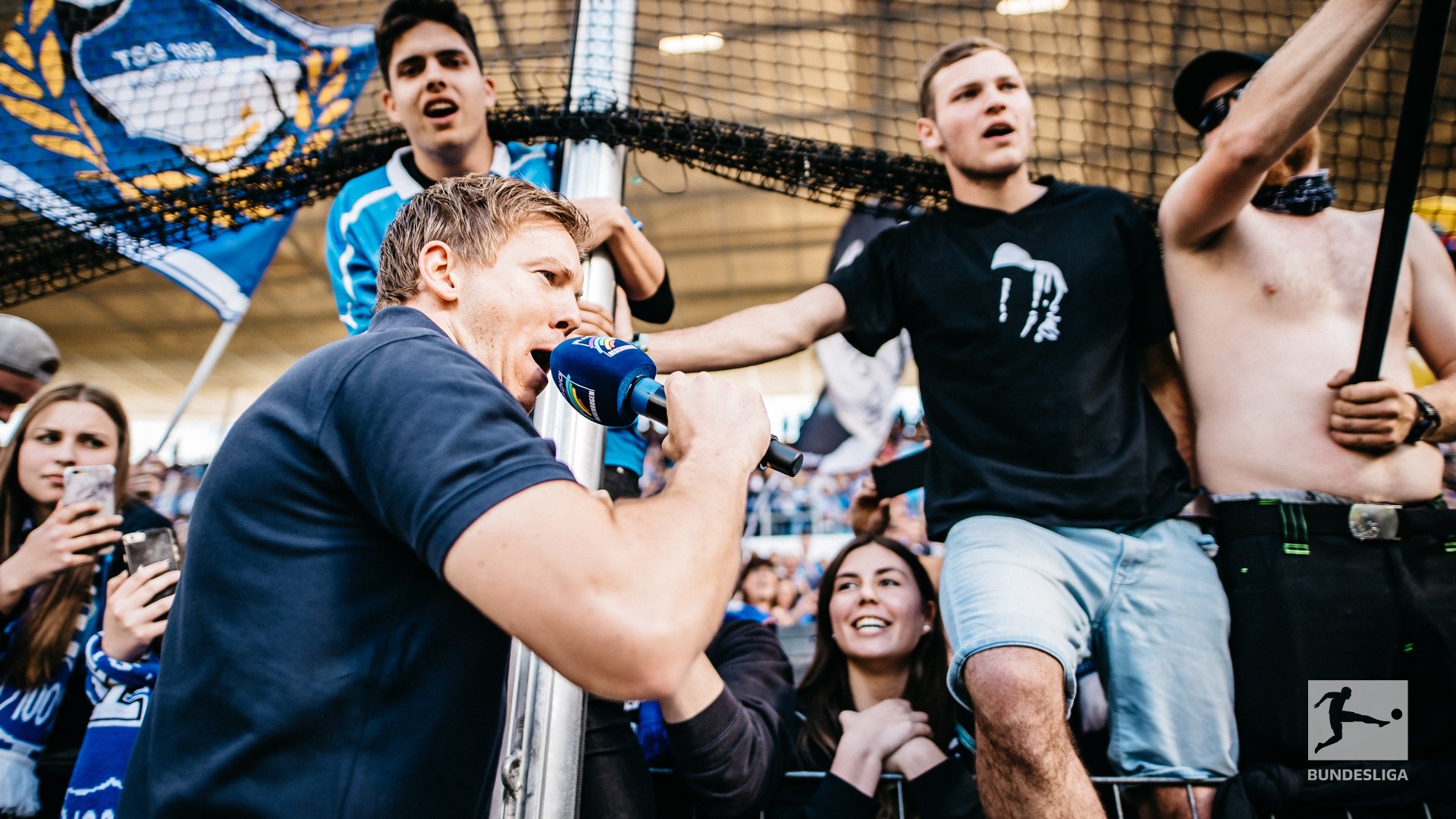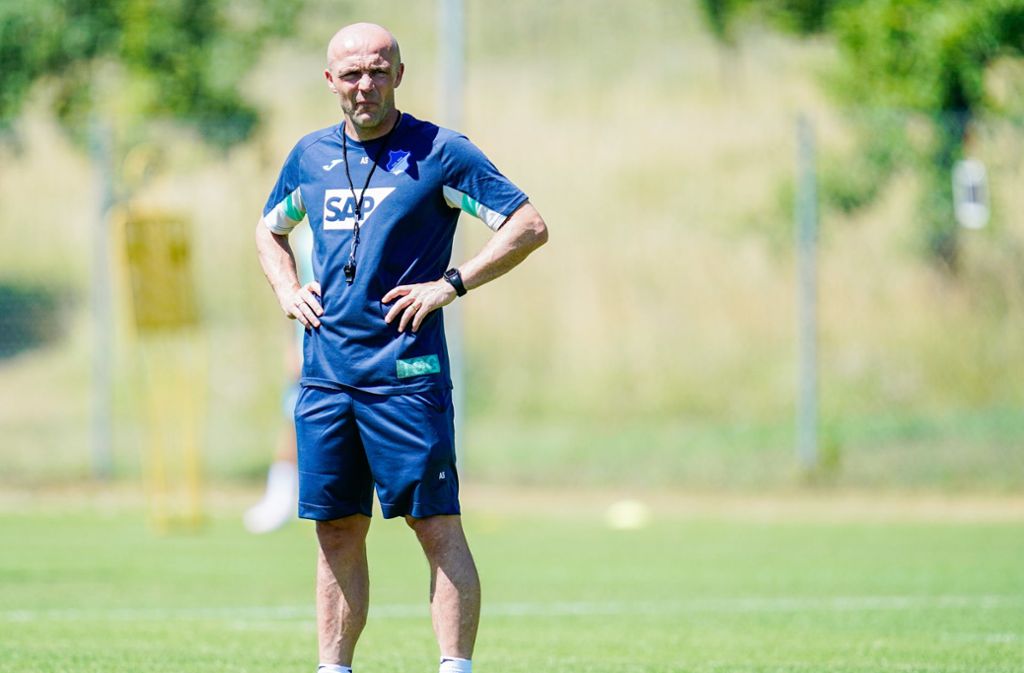Kevin Vogt – Hoffenheim’s ‘Quarterback’

Kevin Vogt laid a grass-cutting through ball past the Bayern Munich midfield into Nadiem Amiri from the half-way-line for Amiri to cut back as Kerem Demirbay made a surging run to the top of the box to hammer into the Bayern net for Hoffenheim to lead 1-0. Julian Nagelsmann chose to move Vogt to centre-back from midfield at the beginning of his tenure at Hoffenheim as the German metamorphosed from a mid-level Bundesliga midfielder to a top tier ball-playing centre-back. The 27-year-old was a modern-day libero under Nagelsmann as he distributed possession with initiative and precision as a mainstay in a back three.
The roles of the centre-back and deep-lying midfielder have coalesced, especially in possession as both are tasked with being deep-lying playmakers while having the positional sense to shoulder their defensive responsibilities adequately. Vogt has been an example of this in European football as in the first year of his positional change, he played the most passes in his own half in the Bundesliga. Vogt was cleverly constructing attacks in his deep-lying schemer role, carefully shifting the ball to move the opposition line of pressure and create space in the opposition defensive structure.
Hoffenheim and Nagelsmann came to rely on him in the middle of the back three to work the ball and beat opposition pressure. The 31-year-old manager grants his centre-back trio creativity in possession as Vogt would constantly ping chipped balls over pressure and into the final third to create opportunities. The centre-back would also move into midfield to create a triangle with his two counterparts to work the ball out of opposition high pressure. Against Schalke, at the beginning of the 2017/18 season, he positioned himself in between the two waves of Schalke pressure, looking to receive the ball and play the early chip to runners in behind.
In a match away to Hertha Berlin last season, Vogt played a chipped ball for Serge Gnabry in behind to have a shot saved before Nico Schulz latched onto the rebound and squared for Andrej Kramaric to balloon another opportunity over. If teams would try to suffocate Hoffenheim and squeeze the central passing lanes, Vogt would play passes into Schulz on the flank who was in ample space to burst forward. In a match against RB Leipzig he did it to great effect as he played a pass to Schulz who drove forward to play in Gnabry to have a through-ball deflected into the path of Mark Uth whose cross was tapped in by Pavel Kaderabek. During the past season, as Nagelsmann changed shape more frequently, Vogt alternated between his centre-back and defensive midfield roles constantly.
“Back then, I had a conversation with Julian, where he said that if I continue to play further at the back, in a three-man defence, he doesn’t want to take away my talents in terms of building play and that I should use my talent in the same way as in my previous position, No.6 in defensive midfield. Apart from that, I’m able to use my pace better, which is not usually as required at No.6, where you run shorter distances. I feel very comfortable in this role and I think the position reflects my talents quite well,” said Vogt exclusively to Left Back Football.
Vogt also uses wall-passes in order to engage the opposition to push forward and press the man in possession before he receives the pass again to work a ball through the space. In a match against Schalke this season, he played a pass to Demirbay through the first line of pressure as the midfielder was in the same vertical line as Florian Grillitsch. Demirbay played a one touch pass back to Vogt as the Schalke midfield line pushed up to mark the duo before the German played a ball into Kramaric in between the lines.
Vogt wall-passes.
At the end of the first half, he played a pass to Grillitsch for the Austrian to work the ball back to him before Vogt traded passes with Amiri as Vogt played a pass back to the German youth international. Amiri then turned and spread a pass out wide to Ermin Bicakcic who worked a pass into Demirbay in the pockets for the midifielder to play through Kramaric who finished with aplomb. The amount of passing moves instigated by Vogt that lead to goals and chances created are great due to the ball-playing centre-back’s ability to play audacious through balls in between the lines or be more patient with build-up.
Vogt had issues with mistakes in terms of misjudging aerial duels and holding a defensive line as these lapses in judgement and concentration led directly to goals. Vogt has improved with more experience as he now slides across the defence to make crucial interceptions and blocks while aerially he has become dominant with his positioning to clear crosses. Nagelsmann’s confidence in the player has also increased as the precocious coach moves him around the defence. In an away match against Shakhtar Donetsk, Vogt moved to the wide centre-back position. Vogt was tasked with shadowing Taison before moving back into his more central role as Hoffenheim played with ten men. The German had a moment where he moved up 30 yards to press an opposition player before racing back into his own half to intercept a pass and end a counter.
Vogt has also been allowed to move into midfield more often this season as at home to Mainz, he pushed up in a 4-3-3 formation out of possession then to centre-back in a 3-4-3 in possession. Vogt will also move into midfield in a 4-3-1-2 as in the higher areas, the 27-year-old is gifted at finding passing alleys into the central pockets. The German has also played nominally in a back four towards the end of this season as it will be intriguing to see if Vogt continues in the position under Alfred Schreuder next season. Schreuder was Nagelsmann’s assistant for one and a half seasons when Vogt first moved to centre-back while he was involved in training sessions and tactical discussions with Nagelsmann.
"As a former defensive midfielder, he has a good overview and knows exactly about the spaces in this part of the field, which is important for the build-up. I compare his position with a quarterback in American Football. He controls the game from behind and makes a lot of passes,” said Nagelsmann exclusively to LeftBackFootball.
Vogt made the most passes in his own half in the Bundesliga in his first season while he won possession in the defensive third more than any other player in his second season. Nagelsmann’s ability to develop players as footballers rather than in the confines of their own positions paid dividends as the 27-year-old became his lieutenant on the pitch. It is surprising that Joachim Loew did not call up Vogt to the German National Team in the past three years just when he developed into one of the better deep-lying playmaking specialists in the Bundesliga.






